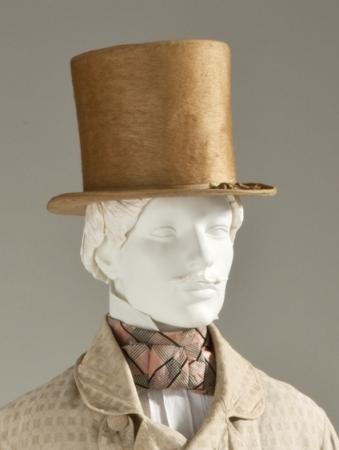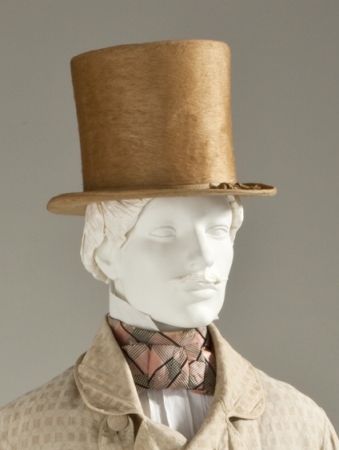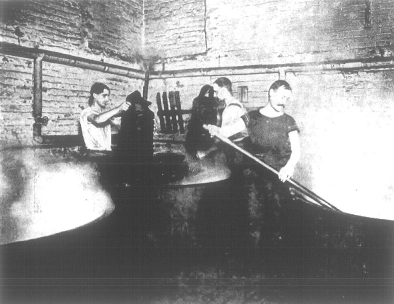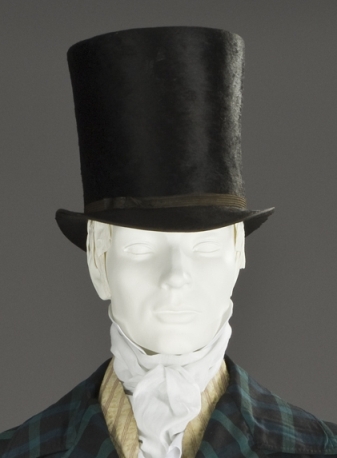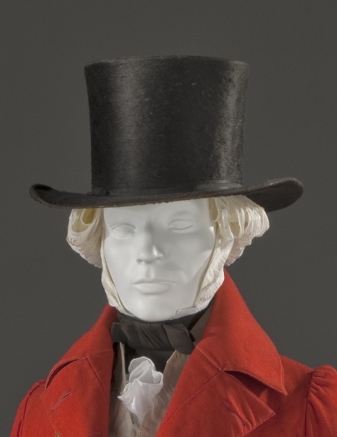In LACMA’s current exhibition, Fashioning Fashion: European Dress in Detail, 1700–1915 (closing March 27), one distinctive accessory for the well dressed gentleman is the top hat.
The manufacture of top hats is a labor-intensive and hazardous process. In the eighteenth century, the best hats were made from the fine underfur of the beaver. Other top quality furs were camel and vicuña. By the mid-nineteenth century, the beaver population had declined and a 100% beaver fur hat was rare; most were a blend of furs, incorporating rabbit, hare, or otter. One key component in top hat manufacture is the felting of the fur, a long process of moistening, heating, and pressing the fur fibers into a dense mat. One way to speed up felting—and production—was carrotting, where fur pelts were soaked in a solution containing mercury salts. The chemical bath causes the scales to lift up, causing more fiber entanglements and making it easier to separate the fur fibers from the skin. One recipe called for three pounds of nitric acid, three ounces of mercury and seven and a half pounds of water. After the fur dried, it was shaved from the pelt. Whether working with the “fluff” dry or moist, the hat-making workshops were an environmental disaster filled with moist mercury-laden air and dry mercury-contaminated dust.
As far back as the eighteenth century, the harm that mercury-containing compounds could do to hat makers was well known. Afflictions included tremors (called “hatters’ shakes”), tooth loss and blackened gums, excessive drooling, muscle twitching, and a lurching manner of walking. So bad were the symptoms that it drove many a hat maker to drink. It’s no wonder that the phrase “mad as a hatter,” came to be. By the late nineteenth century, scientists and doctors began publishing their observations and suggesting workplace improvements such as increased ventilation, shortened exposure times, and the use of protective gloves and clothing. In the twentieth century, newer hat making processes replaced those that used mercury but by then the popularity of hats was in decline.



